
Located close to a well-known surfing spot in Maui, Hawaii, Slaughterhouse Beach House expands the concept of a traditional surfing hut with three connected huts, general living quarters, guest suites, and a main sleeping area. Designed by architects from Seattle, Olson Kundig Architects fused Hawaiian tradition with some of the latest innovations in sustainable architecture. The beach house is situated high enough to provide spectacular views, but low enough to blend in with the landscape of pili grasses and ironwood trees. The structure’s walls are constructed from rammed earth. In this process, different local earth-based mixtures are packed together, and the resulting striated layers are visible both inside and outside the building. The walls blend in with the surroundings, are low maintenance, virtually fireproof, and provides a strong sound barrier.
The roofs are the first thing you notice about the house, these great umbrellas of corrugated metal with extra-deep overhangs to keep out sun and rain. Hefty steel beams protect the roofs from hurricanes and earthquakes. They also do away with the need for supporting columns and allow for uninterrupted views from every room in the house. Materials are simple and raw: concrete floors, rammed-earth walls, exposed lumber, corrugated metal for the roof. The decks are made from ipe, a durable and sustainable hardwood from Brazil that doesn’t need to be treated with preservatives.
The beach house is cooled by massive, 18-inch-thick walls made from rammed earth. During the hottest part of the day, you can still feel the coolness of the night in the walls. This is one of the only rammed-earth houses built in Hawaii, and using Maui earth as a building component means it’s local and natural. Custom-made glass-and-steel-framed walls tilt back on hydraulic lifts (by means of 20 pistons) like airplane hangar doors, so you fully experience the views and changing weather patterns on both the Mauka (mountain) side and the Makai (ocean) side.
Family life is oriented around a long concrete counter, extending from the kitchen, straight out through the front window and 15 feet beyond, over the ipe wood deck.
A simple seating area to one side of the central pavilion with a daybed, coffee table and chairs.
Materials are simple and raw: concrete floors, rammed-earth walls, exposed lumber, corrugated metal for the roof.
Even when the front wall is closed, this hyper-extended counter juts 15 feet through the glass facade, as if it’s riding the house, like a surfboard rides a wave.
The central axis of family living is this massive counter top of smooth concrete that extends the length of the kitchen.
The decks are made from ipe, a durable and sustainable hardwood from Brazil that doesn’t need to be treated with preservatives.
Forty-three-foot-wide glass-and-steel walls on hydraulic pistons flip up to open both sides of the main living area to the trade winds of Honolua Bay.
Custom-made glass-and-steel-framed walls tilt back on hydraulic lifts (by means of 20 pistons) like airplane hangar doors, to fully experience the views.
Many of the home’s accessories can be found at Plantation Design.
Transom windows allow natural light into the master bedroom.
The children are perched at the end of the concrete countertop. A small plot of grass surrounding the property’s pool gives way to native plantings.
Photos: Simon Watson







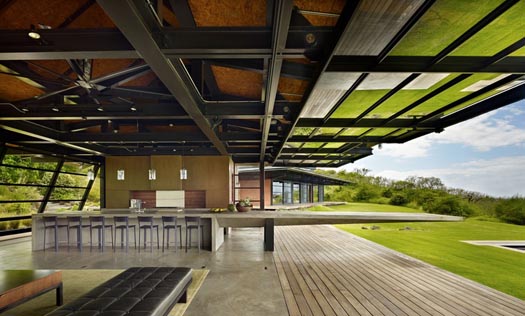

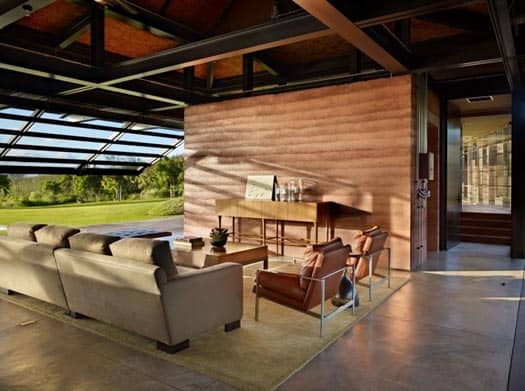


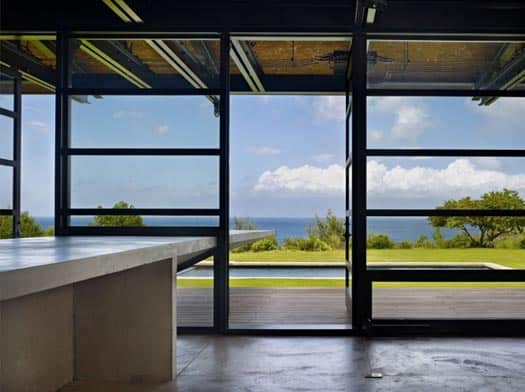

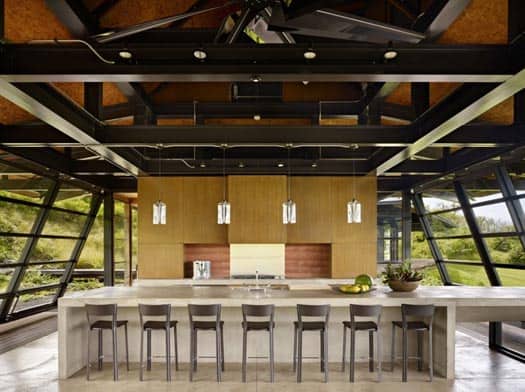







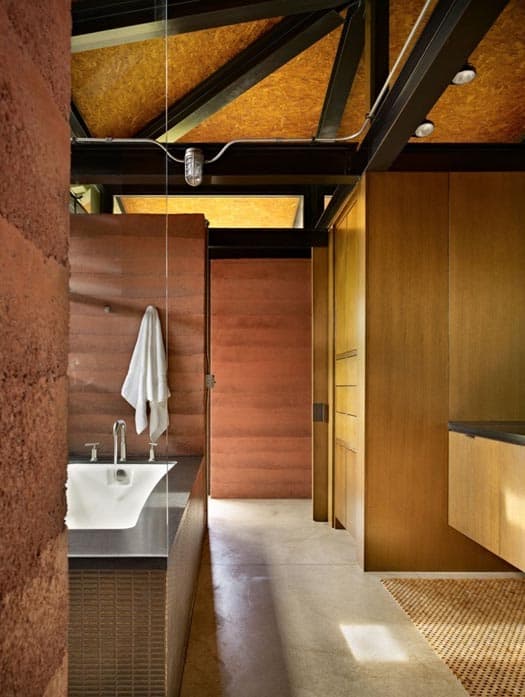

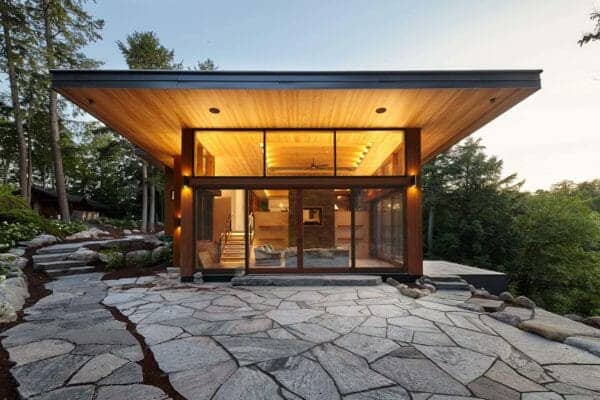

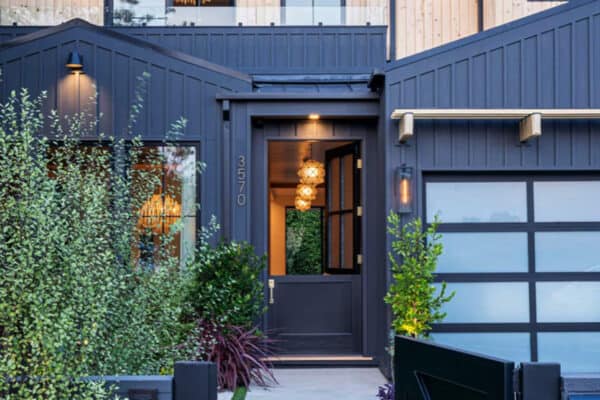
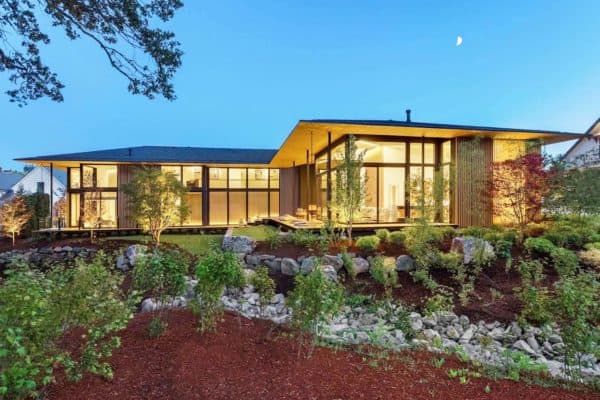
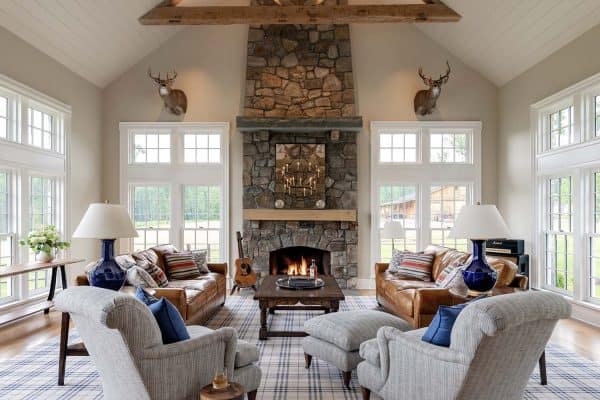

1 comment